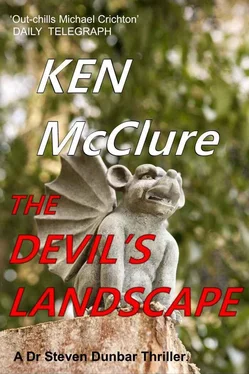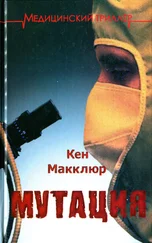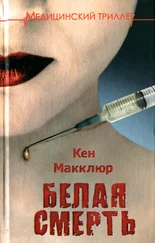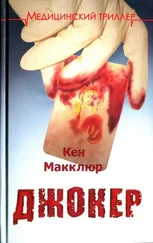Ken McClure
The Devil’s Landscape
Dr Owen Barrowman thought that the long stretch of cracked and broken track was never going to end. It seemed an age since he’d left the main road, having almost missed the small, neglected turn-off sign for Moorlock Hall and was now surrounded on all sides by barren moorland. It had been raining heavily and there was no way of estimating the true depth of potholes filled with water until his wheels hit them. The rain had stopped but fog was drifting across the track, varying in density and prompting him to wonder why anyone would want to build a hospital in the middle of nowhere, but of course, he knew. It had been constructed when Queen Victoria was on the throne and Hansom cabs had plied their trade on cobbled, gas-lit streets, a time when polite society preferred not to acknowledge the existence of unpleasant things. Moorlock Hall had been built to house the criminally insane — out of sight, out of mind.
Society had changed, but Moorlock Hall hadn’t. Fourteen men whose insanity had caused them to commit almost unimaginably heinous crimes were being held there and where they would remain until they died. They had been deemed beyond redemption, not only by a public outraged at their crimes, but also by the practitioners of psychiatric medicine who had done little more than assign vaguely descriptive labels to their conditions and nothing at all to cure them.
Barrowman, a post-doctoral research fellow at London’s Capital University, was here to complete his study of psychopathic killers after getting special permission to approach the Moorlock Hall authorities with a request that their patients might assist his research. He already had samples from patients in Broadmoor, Rampton and Ashworth hospitals in England and from the State Mental Hospital at Carstairs in Scotland when he belatedly became aware of the existence of Moorlock Hall.
The research group Barrowman had joined after getting his PhD from Edinburgh was led by Professor Dorothy Lindstrom who had recently returned from Yale University in the USA. She and her new group were currently existing on limited start-up funding from a pharmaceutical company and what temporary accommodation the university had provided. Expansion in terms of staff and equipment would be dependent on attracting UK government support in the upcoming round of grant applications.
Barrowman had never heard of Moorlock Hall but a careless remark let slip by a government official at a scientific meeting had alerted his old supervisor in Edinburgh to its existence and he had passed on the information as being a possible source of more volunteers for his study. According to the official, Moorlock Hall was ‘for the real baddies’.
Professor Lindstrom had not been too keen on him making the approach, sensing that there might be problems if no one was supposed to know about the place, but his assertion that the inmates of such a place were exactly what he was looking for and the fact that interviewing a few more study subjects and collecting samples from them wouldn’t require much in the way of finance had gained her reluctant permission to go ahead. After initial interest from the inmates however, only one had agreed to co-operate. The others had backed out after learning that there would be no quid pro quo . No privileges would be on offer and any possibility of parole would definitely remain out of the question.
Barrowman crested a small rise and the building came into view. He expected it be of its time, but wasn’t prepared for something that pushed the boundaries of ‘forbidding’ to the limit. Perhaps it was its sheer size that took him by surprise for it had obviously been built to house many more than it currently did with three stories and towers at both ends of its front elevation and its stone walls blackened by well over a hundred years exposure to wind and rain.
He stopped the car some way short of the building, feeling the need to prepare himself and gather his thoughts. The fact that there were no standard hospital signs displaying directions to clinics and departments, no ambulance bays and no busy car parks gave the impression that the building was deserted, but of course, it wasn’t. In Barrowman’s mind, the invisible residents had an undeniable presence.
There was a row of cottages to the left and at right angles to the main building, which Barrowman thought might be staff accommodation. One of them boasted a washing line, its clothes hanging limply in the still air but providing welcome assurance that there was some normality to be found here for there was precious little else to suggest that he wasn’t on the set of some Gothic horror movie. There were only four vehicles parked outside the main building. He made it five.
Pushing the button by the door resulted in an electronic hiss as a grill on the wall sprang into life.
‘Yes?’
‘Dr Barrowman. Dr Groves is expecting me.’
Barrowman winced as a steel slat in the door slid back with a bang and a pair of eyes darted over him before the small door inset in the substantial main one was opened. He was admitted, but only as far as a gate house some two metres beyond where he waited until the main door was secured behind him.
‘Sorry,’ said a middle-aged man wearing green hospital scrubs, ‘we have procedures.’
Barrowman put his briefcase down and stretched out his arms for a security pat-down.
‘I’m afraid I’ll have to ask you to open your case, sir.’
Barrowman felt embarrassed. His black leather case with the gold combination locks and his initials — a present from his wife Lucy at Christmas — contained nothing more than a copy of The Guardian and a plastic box containing the detritus of what had been his pack lunch — sauce-stained sandwich wrapping, an apple core and a crushed Coke can.
‘Thank you sir,’ said the man without change of expression although Barrowman felt sure he’d be telling the tale over supper. ‘Snazzy case, all leather and locks and do you know what he had in it?...’
‘And now your fingerprints, sir...’
Barrowman complied without comment and was then submitted to an iris recognition procedure. He was finally led through another locked door, which gave access to the ground floor of the main building where he was escorted along a corridor, as far as a further door protected by a number code before stopping there and being shown into a room leading off to the right and marked, Medical Director. It was empty.
‘Dr Groves apologises. He’ll be with you shortly, sir. Please make yourself comfortable.’
Comfortable was the last thing Barrowman expected to feel. He was in an office with a desk, a computer, a swivel chair for the desk user and a static one for visitors, rows of medical journals along one wall, a painting of yachts under sail and a wildlife calendar on another. The thing that made it so oppressive apart from its sparseness and institute-green walls was the lack of a window. Above him, a high ceiling bedecked with cobwebs suggested that spiders were the only things to have made contact with it in a long time. There was also a marked absence of sound, no hum of machinery, no air conditioning or distant sounds of activity. There was silence until the door opened and Groves entered, uttering apologies for having been delayed.
Barrowman rose and shook hands with a gaunt man of around six feet tall with a sallow, lined complexion and a comb-over hair style. He wore a brown suit that had seen better days and a faded college tie that secured a shirt collar a bit too large for his wrinkled neck. Barrowman noted that Groves’ mouth drooped on the left side and his left arm seemed limp. He guessed at a stroke in the not too distant past.
Читать дальше












